Stability of an LC-MS/MS system over several months of use
Highlighting the robustness of the SCIEX 7500 System
Jack Steed1, Jessica Smith1, Cathy Lane1, Jianru Stahl-Zeng2
1SCIEX, UK; 2SCIEX, Germany
Results
During this period, ~4000 injections were performed across multiple compound classes including peptides, oligonucleotides, per- and polyfluoroalkyl substances (PFASs), nitrosamines and common veterinary drugs in a variety of matrices including multiple drug products, plasma and food matrices such as pork, chicken and milk.
Shortly after instrument installation, the robustness of the SCIEX 7500 system was investigated by injecting a spiked plasma sample 1500 times (data collection performed on the 15th of April 2021). This experiment showed excellent peak area reproducibility across the analysis.1 Subsequently, multiple PFAS compounds were analyzed, with the sensitivity of the analysis highlighted in the XICs for L-PFOS (Figure 1).2 The data shows an impressive lower limit of quantification (LLOQ), which was able to be achieved with no cleaning necessary before data collection.
Following this, analysis of various peptides was conducted. See Figure 2 which shows the sensitivity achievable for the peptide LASVSVSR using the SCIEX 7500 system.
Figure 1. Extracted Ion Chromatograms (XICs) of L-PFOS analyzed on the SCIEX 7500 System. The XICs for L-PFOS are (from left to right) diluent blank, 0.1 ng/L (LOQ), 0.5 ng/L and 1 ng/L. Data collected on 05th of May 2021.
Figure 2. XICs of the peptide LASVSVSR using the SCIEX 7500 system with high flow chromatography (0.6 mL/min). The XICs above from left to right – blank, LOD (5 amol) and 50 amol. This data highlights that even after the analysis of different compound classes in multiple matrices, exceptional sensitivity can still be achieved, with no full system cleaning required. Peptide source: Promega 6 x 5 LC-MS/MS peptide reference mix. Data collected on the 04th of June 2021.
Similarly, Figures 3 and 4 highlight the sensitivity achievable for two common veterinary medicines analyzed in both positive and negative ionization mode, after the instrument had been in use for over 5 months. This data illustrates (Figures 3 and 4) that full system cleaning is rarely required with excellent sensitivity achieved after several months of data collection across multiple compound classes in a variety of matrices.
Figure 3. Overlaid quantifier and qualifier XICs of albendazole in an un-spiked milk sample (left) and a 0.01 ng/mL spiked milk sample analyzed in positive mode (right). Data collected on the 29th of July 2021.
Figure 4. Overlaid quantifier and qualifier XICs of triclabendazole sulfoxide in an un-spiked milk sample (left) and a 0.01 ng/mL spiked milk sample analyzed in negative mode (right). Data collected on the 29th of July 2021.
Conclusions
- The SCIEX 7500 system provides excellent levels of robustness throughout months of analysis of different compound classes, in a variety of different matrices.
- Analysis of both positive and negative compounds was performed, highlighting that the SCIEX 7500 system is capable of high levels of robustness in both acquisition modes.
- No system cleaning was required in between sample analysis while being able to achieve ultra-high levels of sensitivity with impressive LLOQ values in a variety of applications.
References
- Robust bioanalysis over a large 1500 injection sample set. SCIEX technical note, RUO-MKT-02-13336-A.
- Confident quantification of per- and polyfluoroalkyl substances in water intended for human consumption. SCIEX technical note, RUO-MKT-02-13414-B.
- Ultra-high sensitivity quantification of veterinary drug residues in animal by-products. SCIEX technical note, RUO-MKT-02-14259-A.
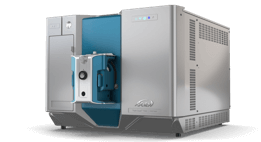
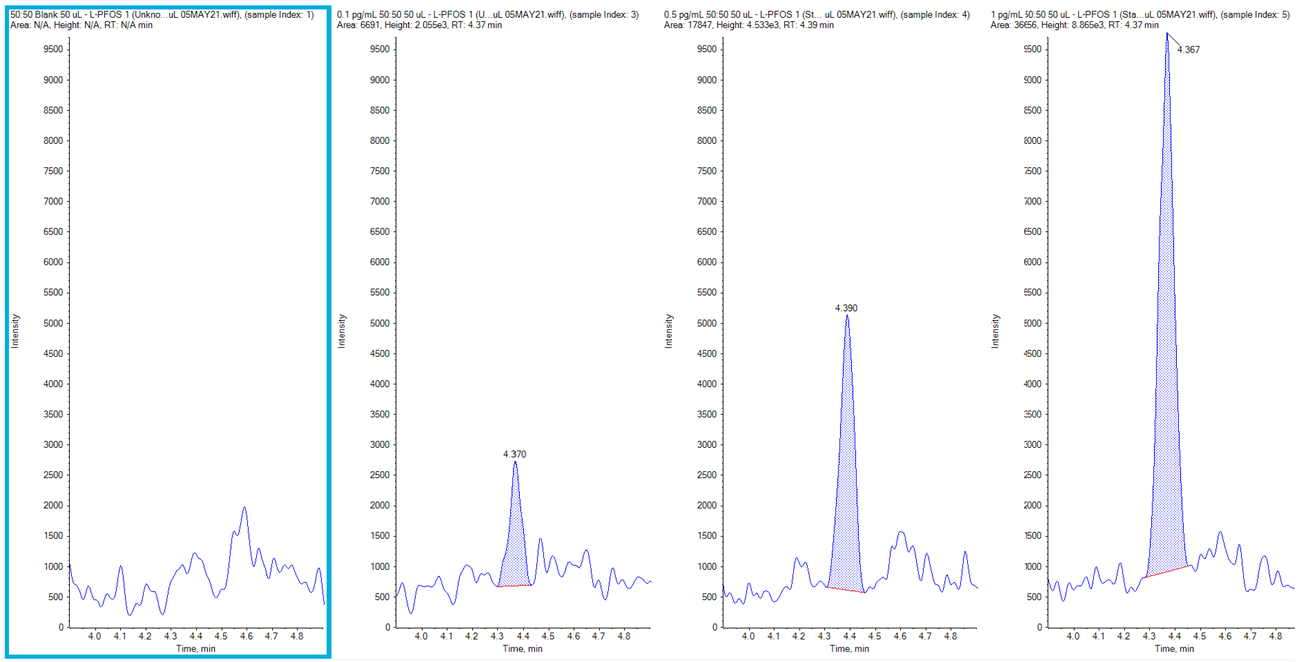 Click to enlarge
Click to enlarge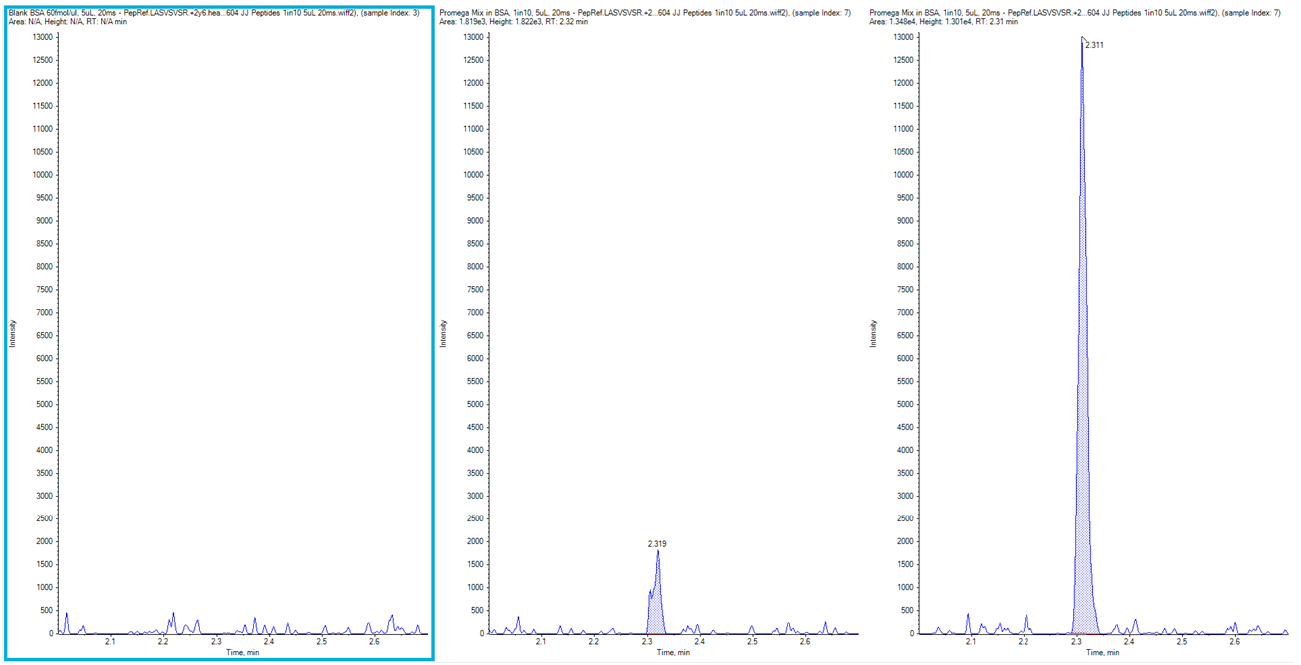 Click to enlarge
Click to enlarge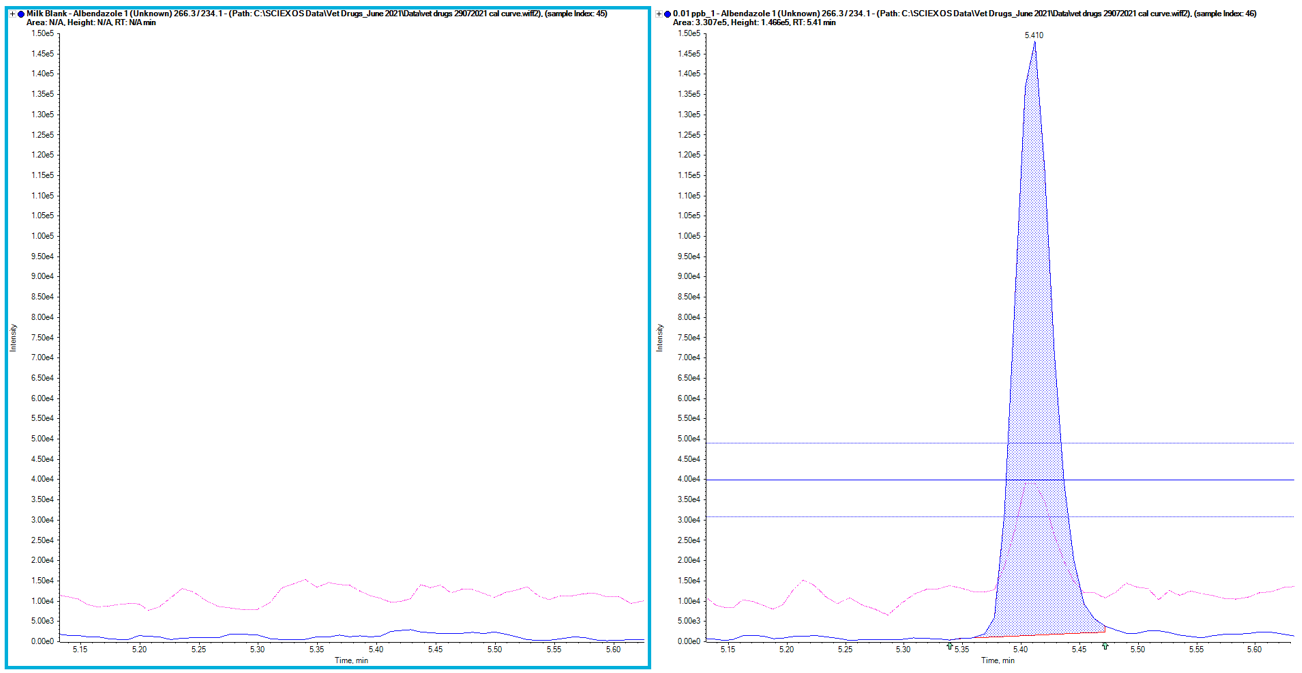 Click to enlarge
Click to enlarge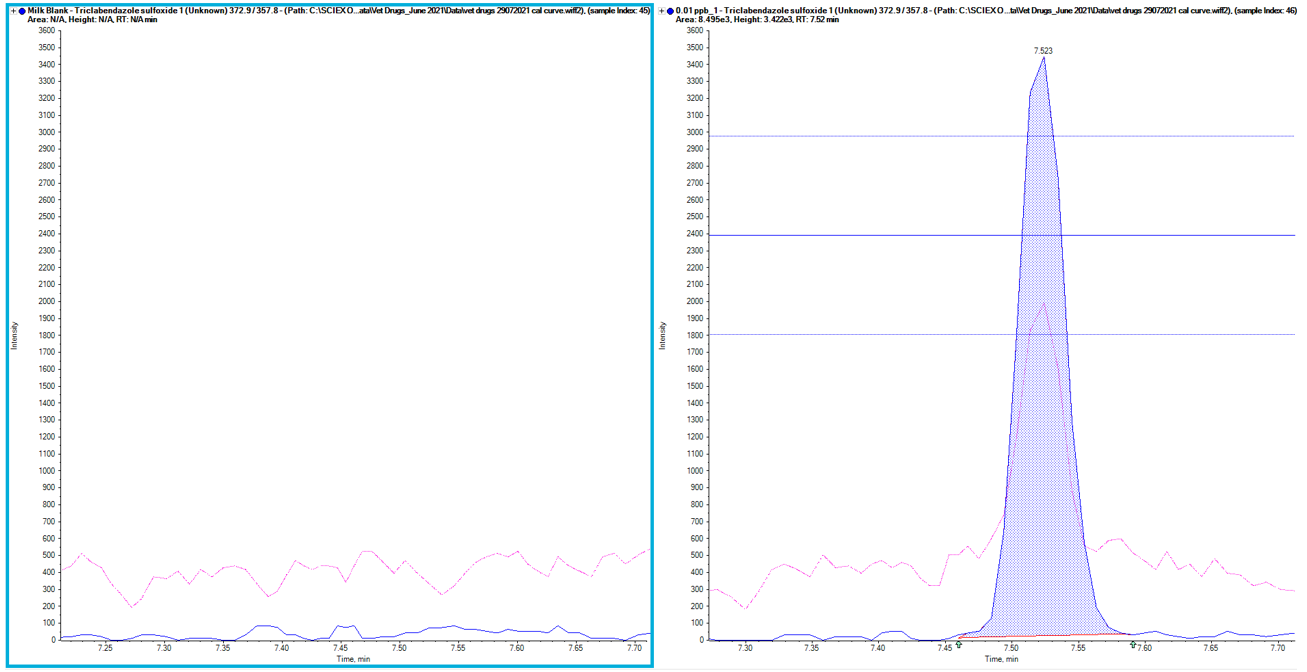 Click to enlarge
Click to enlarge